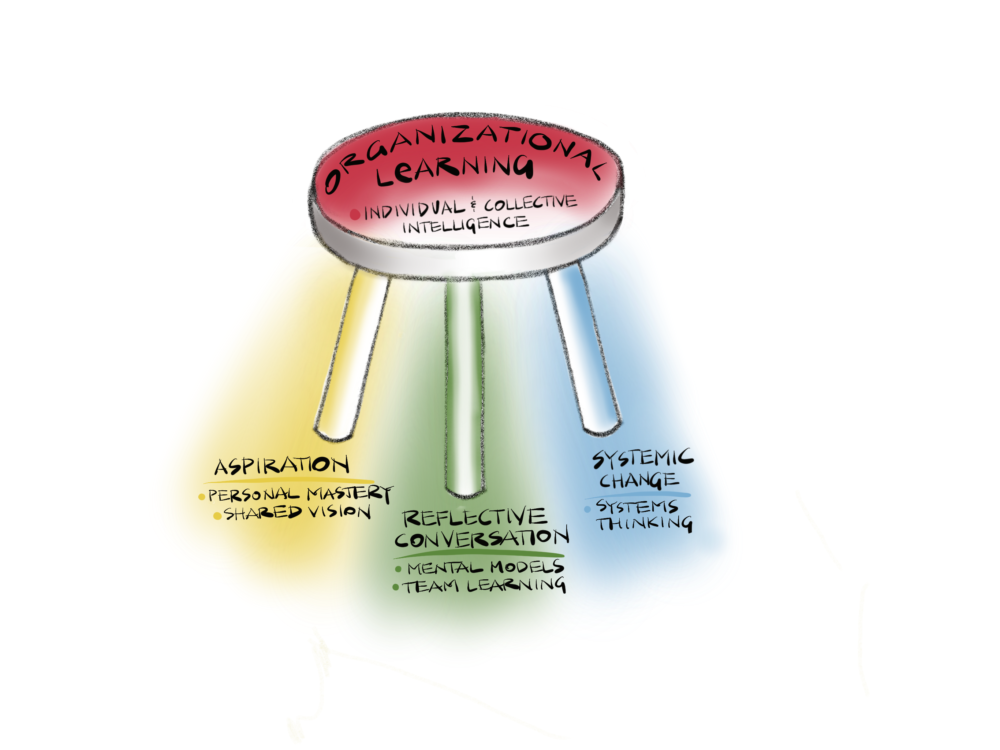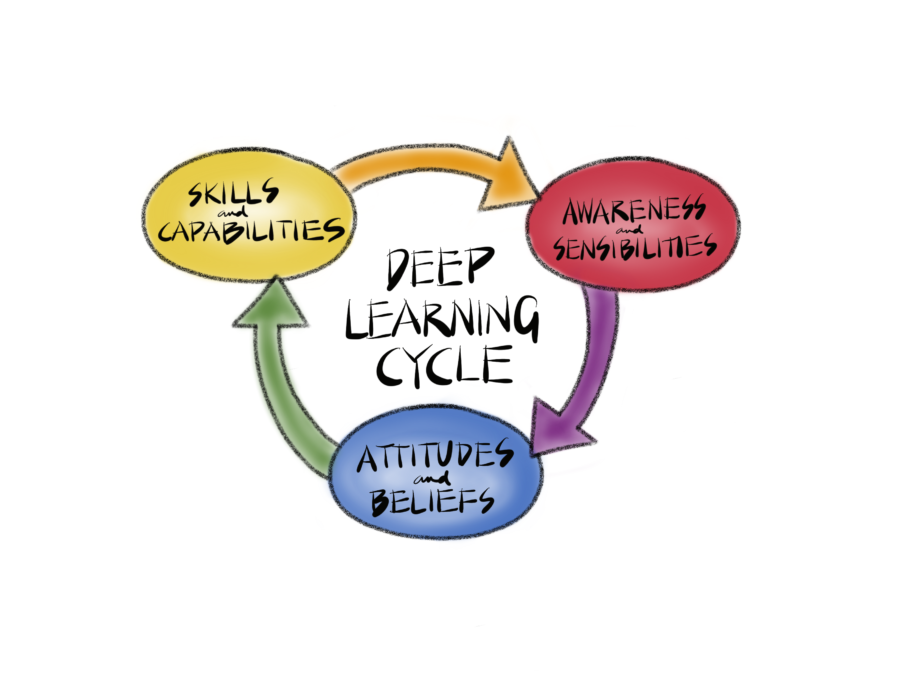Systems Concepts
What is a system?
“A system is a perceived whole whose elements ‘hang together’ because they continually affect each other over time and operate toward a common purpose…. Examples of systems include biological organisms (including human bodies), the atmosphere, diseases, ecological niches, factories, chemical reactions, political entities, communities, industries, families, teams—and all organizations. You and your work are probably elements of dozens of different systems.” —The Fifth Discipline Fieldbook
What is systems thinking?
“Systems thinking is a way of thinking about, and a language for describing and understanding, the forces and interrelationships that shape the behavior of systems. This discipline helps us see how to change systems more effectively, and to act more in tune with the larger processes of the natural and economic world.” —The Fifth Discipline Fieldbook
What is systems change?
“Systems change [the process of changing systems as a result of changing the way the people within them operate] is inherently an ‘inner’ and ‘outer’ process or journey. This work involves deep shifts in mental models, relationships, and taken-for-granted ways of operating as much as it involves shifts in organizational roles and formal structures, metrics and performance management, and goals and policies. Because of this, we believe that the development of self is foundational. This inner work—which involves developing awareness, compassion, understanding, and wisdom—also extends to teams, networks, organizations, and ultimately to the larger systems within which we work.” —The Dawn of System Leadership
System leader
“Though they differ widely in personality and style, genuine system leaders have a remarkably similar impact. Over time, their profound commitment to the health of the whole radiates to nurture similar commitment in others. Their ability to see reality through the eyes of people very different from themselves encourages others to be more open as well. They build relationships based on deep listening, and networks of trust and collaboration start to flourish. They are so convinced that something can be done that they do not wait for a fully developed plan, thereby freeing others to step ahead and learn by doing. Indeed, one of their greatest contributions can come from the strength of their ignorance, which gives them permission to ask obvious questions and to embody an openness and commitment to their own ongoing learning and growth that eventually infuse larger change efforts.” —The Dawn of System Leadership
Systems change mandala
Mandalas, a circle with a center, are among the world’s oldest ways of expressing a wholeness or deep web of interconnections, such as Native American “medicine wheels” based on the four cardinal directions or Tibetan sand mandalas. This systems change mandala, originally developed by Mette Miriam Boell, points to four interrelated imperatives—and the tensions between them—that we need to embrace in order to support deep change.
The Three-Legged Stool of Systemic Change Capabilities

The Deep Learning Cycle

Systems Thinking Basics
Want more of the fundamentals, the basics, the vocabulary? Check out this article by Daniel H. Kim —An Introduction to Systems Thinking